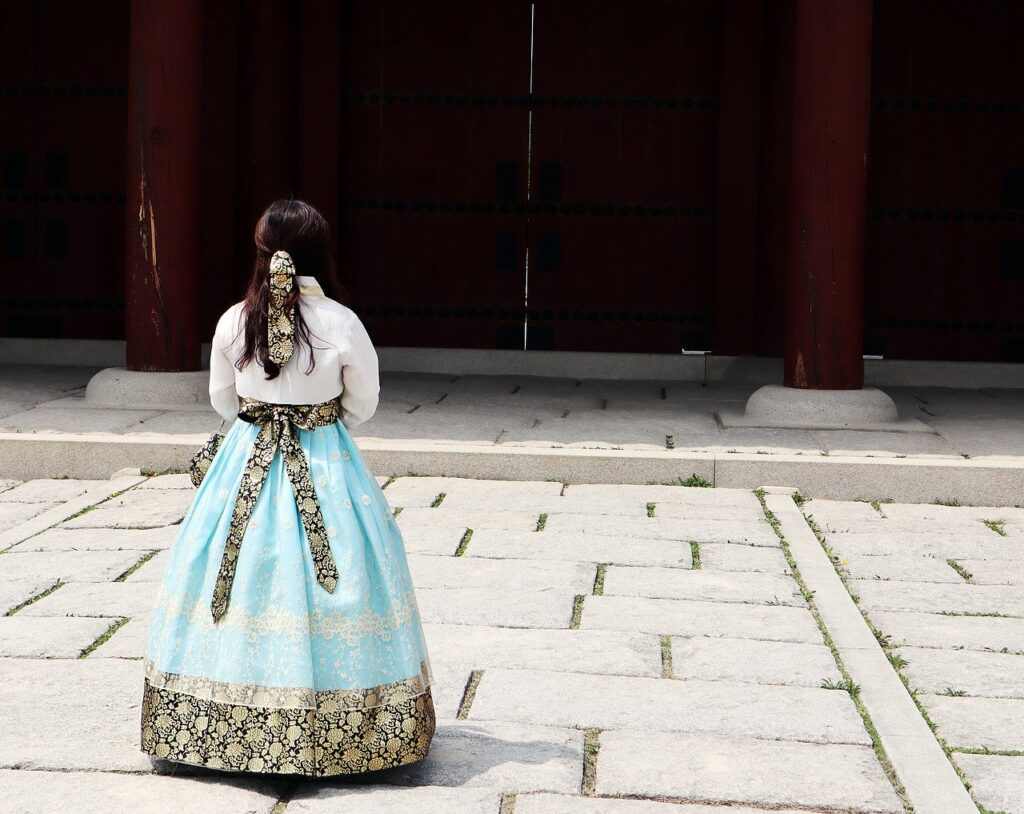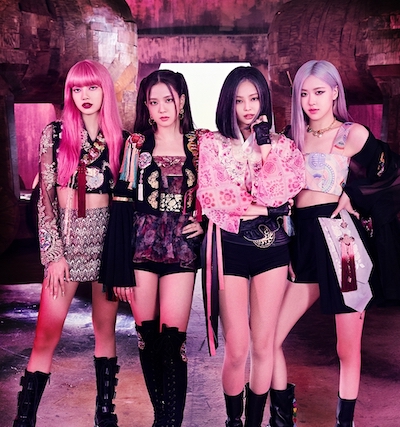Dive into the evolution of Korean fashion culture, from its rapid “ppalli-ppalli” changes to the global influence of K-pop and K-drama.
Fashion is a reflection of culture and requires diversity to evolve. Clothes showcase our individuality and give us pleasure. They serve purposes beyond mere protection from the cold and other elements. When you dress up, one of the most important things is to do it in a way that shows off your personal traits. Seeing someone else in the same outfit can often be off-putting.
Korean Fashion Culture
Korean fashion culture changes rapidly, often referred to as “ppalli-ppalli” culture. It literally translates to a “quick-quick” culture that transforms everything in the country, be it fashion, beauty, or technology. It certainly fits the profile for a country that’s constantly moving at a fast pace – with the fastest internet, and quickest food delivery in minutes. The Korean culture is always stuck in hyperdrive mode, and keeping track of the latest changes can be difficult. It is almost like the present is constantly moving and becoming the past before anyone can get a chance to catch up!
Impact of Modern History on Korean Fashion Culture
Korea’s evolving fashion culture mirrors its rapid modernization. From the strict dress codes of the 1960s and 70s during the military rule to more expressive styles post the 1987 June Democratic Struggle, the nation’s aesthetics have transformed.
Today, the “Hallyu” or Korean wave, backed by the government’s cultural export initiatives since the 1990s, is propelling Korean culture globally, enhancing its influence in realms like fashion and entertainment.
Rise of K-drama and K-pop Influencing Fashion Culture
K-media, especially K-pop and K-drama, has been instrumental in promoting K-fashion worldwide. The media spotlight on K-pop artists, their collaborations with global fashion brands, and their unique styling have amplified the global value of both Korean and international brands.
Post-1990s, there was a significant impact of contemporary K-drama and K-pop on Korean fashion culture. Outfits worn by K-drama stars and pop idols are followed by many and become an inspiration for their dressing up styles.
For example, Yoona’s style as a cheerful hotelier in the 2023 romcom K-drama “King The Land” ranged from cute-casual to chic-casual. Her blend of style and comfort inspires fans to style their outfits and make fabulous fashion choices. Similarly, (G)I-DLE showcased the “high teen” concept with glamorous mean girl outfits in their title track “Queencard” from the play “I Feel.”
It’s not just the music boosting Korean fashion, but it also works the other way around. Korean fashion brands have turned K-pop music into something to be watched rather than just listened to. Fashion brands specialize in creating idol stage costumes or even launching collaboration collections to give fans a wholesome experience.
Korean Fashion Culture Through Hanbok
Hanbok, a traditional Korean dress, has retained its fundamental characteristics for centuries. You can expect a “jeogori” (a fitted jacket), “baji” (trousers), and “chima” (a bell-like skirt), usually in vibrant colors following the five elements of “Obangseak,” the ancient Korean color theory.
Hanbok, the traditional Korean dress, remains a rich source of inspiration for contemporary designers. Driven by its resurgence in K-entertainment, designers are not just modernizing its design or making it gender-fluid but are genuinely revitalizing its essence.

Tchai Kim stands out, deriving inspiration from the hanbok. She marries traditional silhouettes with fabrics like silk, cotton, and linen. Unlike designers hesitant about embracing tradition, Kim is drawn to it, especially after collaborating with innovative stylist Suh YoungHee, bringing a fresh visual appeal to the hanbok.
Designer Münn (Hyun-min Han) presented at London Fashion Week Men’s 2019, integrating hanbok sewing methods and infusing them with patterns reminiscent of traditional ink paintings.
Minju Kim, winner of Netflix’s 2020 Next in Fashion, intertwines sustainability with her designs. She employs biodegradable materials such as hemp, reminiscent of ancient hanbok materials for the elite.
Hanbok and K-entertainment
K-pop and K-drama have redefined the hanbok, transforming what was once seen as a traditional garment into a globally admired fashion statement. Recent pop culture releases showcase that the hanbok comeback is not an exaggeration.

In 2020, BLACKPINK wore embroidered, cropped hanbok-style jackets for their highly anticipated single How You Like That music video. In a promotional clip, BTS also rocked the hanbok look by wearing Tchai Kim hanboks.
K-dramas are not far behind in featuring hanbok. Love in the Moonlight (2016) and Mr. Sunshine (2018) are two historical period dramas set in the 19th century, making traditional clothing styles more popular.
The “Neutro” Trend
While K-entertainment is all set to take the Korean fashion culture of featuring hanbok as design inspiration, the idea of going vintage is an ongoing trend in the industry. Whether it is entertainment or style, the “neutro” trend is literally a mix of “new” and “retro.”
The “neutro” trend in the fashion industry is all about seeing the comeback of retro clothing and accessories from the 80s and 90s. And surprisingly, they are becoming quite popular amongst the Korean youth, especially considering their usual future-forward culture.
This trend is not just restricted to hanbok-inspired outfits. Quite a few Korean fashion brands are bringing back the style and aesthetics from the year 2000, a trend commonly referred to as Y2K in the Korean fashion culture. It brings back the memories of the late 1990s to early-to-mid 2000s, which were prominently featured on runways in 2022.
Lesugiatelier (르수기아뜰리에) is one such Korean haute-couture-tailored brand based on the legacy of the generation of its creative director, Kim Jinsuk. Designing under the slogan “Something Unusual Generates Ingenuity,” the designs from the brand are bold and offer a new perspective while balancing futurism and nostalgic grunge. K-pop stars like Lisa and Jennie from the girl K-pop band BLACKPINK, Fromis 9, Aespa, Stray Kids, and Rosalia have all donned the Lesugiatelier’s offbeat yet no-nonsense outfits.
2000 Archives is a Korean fashion brand that started as a label collecting vintage designer goods but now focuses on designing collections influenced by 2000s fashion. PAX00100 is another Korean fashion brand that makes one-of-a-kind handmade clothes based on the “Hand Sewing Work” philosophy. Graffiti-bearing ripped t-shirts and skirts are reminiscent of the Y2K fashion. Expired Girl is a Korean fashion accessory brand based on the sensibilities of the 2000s when it comes to designing eyewear.
The Current Status of the Korean Fashion Industry
Korea’s fashion scene is bifurcated into industry-led production and daily-wear culture. Fashion is deeply rooted in Korean culture, particularly the consumer-driven side.
Despite its niche appeal, high-end fashion enriches cultural diversity, representing a nation’s cultural fingerprint. However, the current economic slump has reduced consumption, favoring affordable global fast fashion brands.
Historically, when American movies dominated, Korean cinema adapted and gained global acclaim by the mid-1990s. Similarly, Korean fashion needs a revamp. Notwithstanding the presence of talented designers since the 2000s and diverse media exposure, local brands lag behind. This is largely due to the limited popularity of Korean designers compared to their international counterparts.
For Korean fashion to flourish, greater emphasis should be placed on promoting its designers. As consumer fashion thrives, the industry should also champion local design talents to ensure holistic growth.
Korean Fashion Companies Capturing the Market
Some of the fashion companies are rapidly expanding their presence in the global market. They are opening stores in major cities worldwide, acquiring overseas brands, and hiring local designers to expand their presence. Much of their success comes from the rapidly growing popularity of Korean culture worldwide. In addition, compared to international luxury brands, Korean fashion brands are known for their innovative designs, high-quality fabrics, and affordable prices. Their dependence on cutting-edge technology and rapid production capabilities also sets them apart from the artisanal system of European luxury brands.
Companies like Kolon (a leading Korean outdoor brand) FnC’s golf brand ‘WAAC’ have opened a store in one of the largest golf editorial shops in the United States. E-Land (South Korean conglomerate) has acquired the Italian premium general merchandise brands ‘Cochinelle’ and ‘Mandarina Duck.’ Woo Young-mi’s menswear brand, Solid Homme, is sold in 14 major luxury stores in 38 countries worldwide.
Wrapping Up
Whether it is the best-selling books like Min Jin Lee’s Pachinko, now turned into a series by Apple TV, or films recognized on an international stage like Minari and Parasite, the Hallyu wave is sweeping worldwide. Multiple Covid lockdowns certainly saw a dramatic rise in new K-pop and K-drama fans. Korean culture is so vast with its multiple facets that everyone finds something to relate to. The Hallyu appeals to a wider audience; whether it is the Korean fashion culture or the binge-worthy Korean dramas, it’s a surprising mixture.









